The first post from our trip north to the Kakuma Refugee Camp shared a bit about why we went, who we traveled with, and where we stayed. Today, you’ll get a small glimpse of what the camps looked like during our visit.
The Kakuma Camp has grown, by some reports, to over 300,000 people. Much of it is separated by nationality, housing those from Sudan, Congo, Uganda, Rwanda, Somalia, and other countries. Kalobeyei is the newest camp not far from Kakuma where various people groups live side-by-side. We drove into the new camp our second morning for an outdoor service with a young Africa Gospel Church (AGC) congregation. They do not yet have a building but were given this small space to meet for services. They simply place a piece of canvas on the ground, which becomes their church floor. They hope to acquire a piece of land within the camp along with materials to build a roof and, eventually, walls, as well. The young women below sang and danced during the service. (The youngest was an absolute doll. She sang a little but also looked at bugs on the ground and squeezed in between the older girls to dance.) Many children from the school across the road and the surrounding area came to see us and hear the music. (It’s likely lots of these kids had never seen a mzungu – a white person -before!)
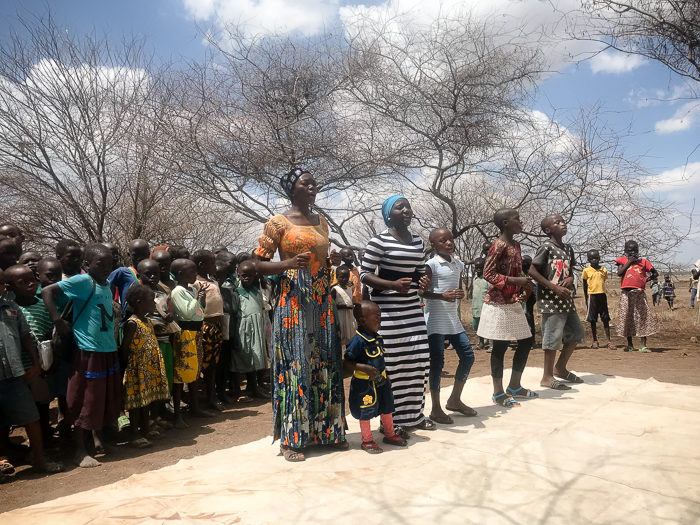
We each had an opportunity to speak to the people who had gathered. Not only were our messages translated into Swahili, but they were also translated into Arabic! It takes a lot longer to deliver a short message when it’s actually being said three times.
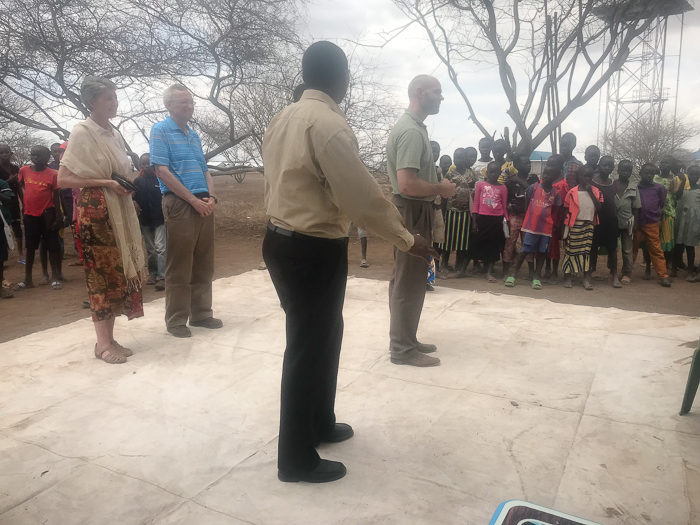
Following the service, we were invited to the home of one of the pastors. Kalobeyei looks quite different from the Kakuma Camp because the new homes are being built with blocks instead of metal sheets.
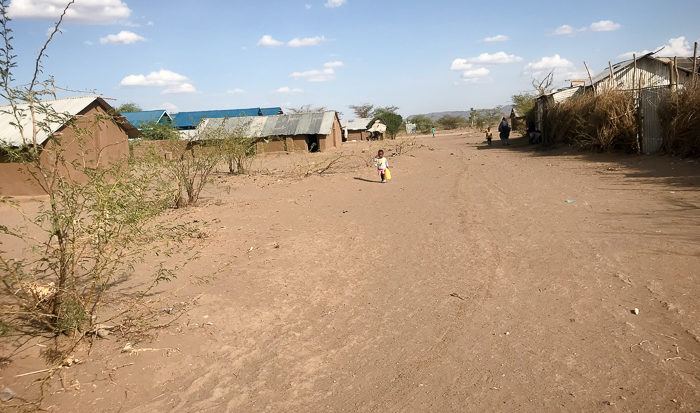
Holes are dug and surrounded with metal sheets in the space between rows of homes to be used as latrines. When it becomes full, the hole is covered with rocks and a new latrine is dug several feet away.
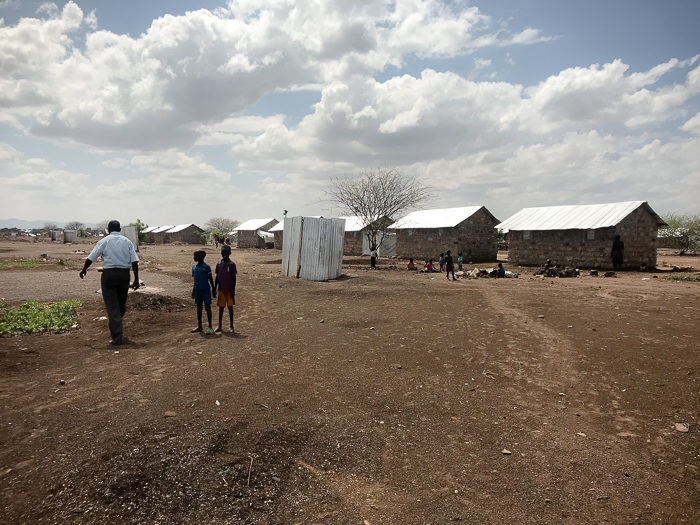
Some families have tried to grow small gardens, which is incredibly difficult in northern Kenya.
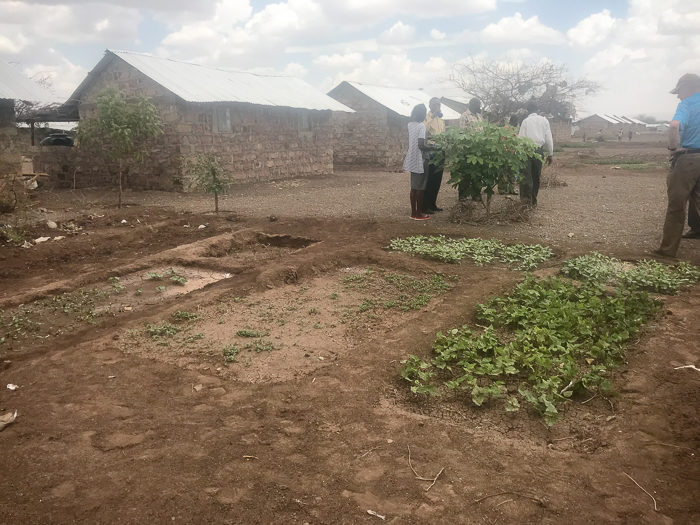
Though the new homes are made of blocks, they are still very small. This space is where the AGC associate pastor lives. Her husband and one of her sons died before she fled to Kenya. Now she cares for her remaining children as well as those of her sister who was not able to escape Congo. Thirteen people now live in this small room.
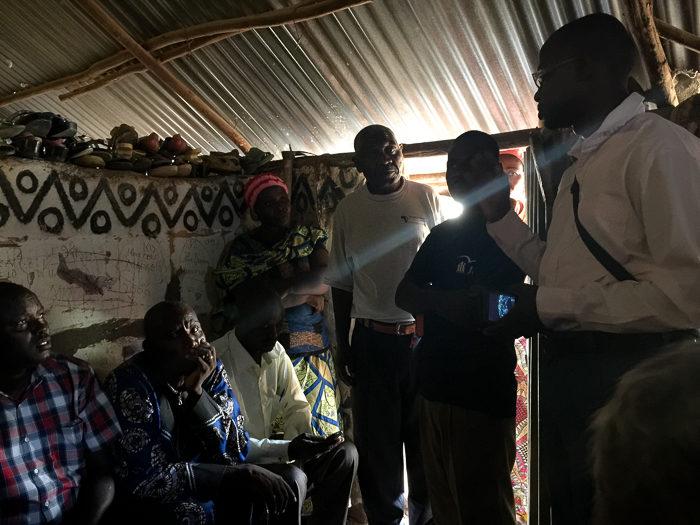
Walls are not constructed to the ceiling. Another family lives on the other side of the wall, and another further down.
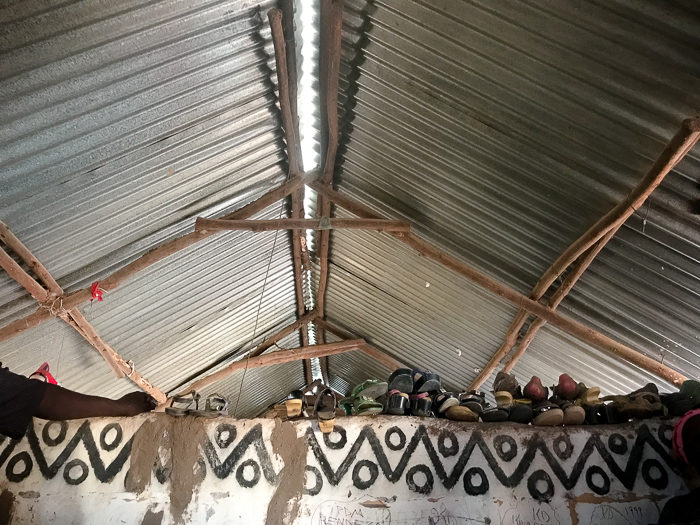
This is the family’s entire space. It can get very hot inside, so a lot of time is spent outside, including time cooking. What you see in the photo below contains everything the family owns.
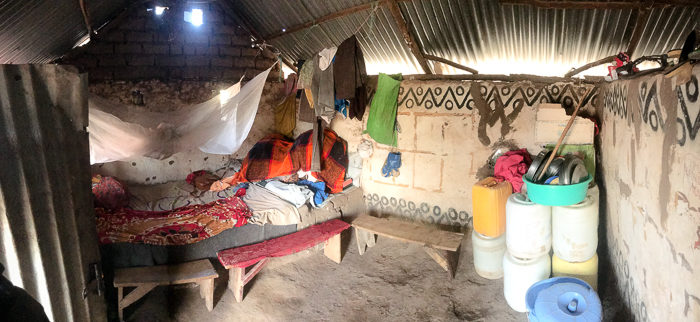
Following our visit to the Kalobeyei Camp, we traveled to another small AGC church outside of Kakuma, which was made up of the local Turkana people. We drove across this bridge extending over a dry riverbed where we could see people digging for water. Water is scarce. It is sometimes only reached at a depth of 150 feet below the surface.
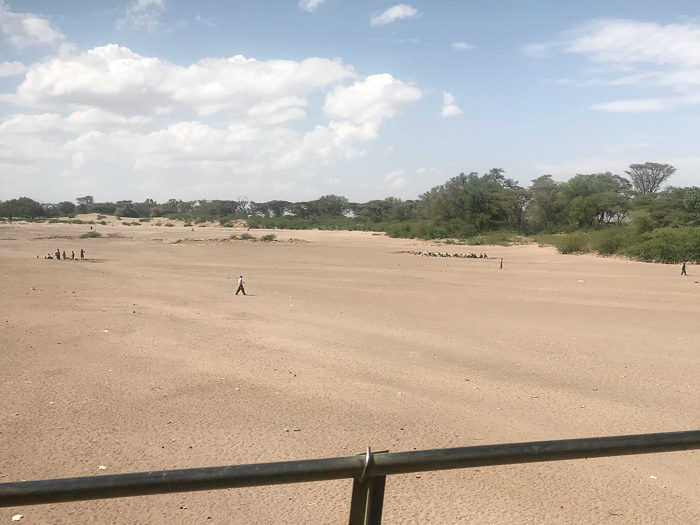
In the evenings during our visit, we had chai and ate dinner at the home of one of the AGC families. They were absolutely lovely and incredibly welcoming. I had such fun playing games in the near-dark with the kids. I’m so glad our friend Steve caught this picture!
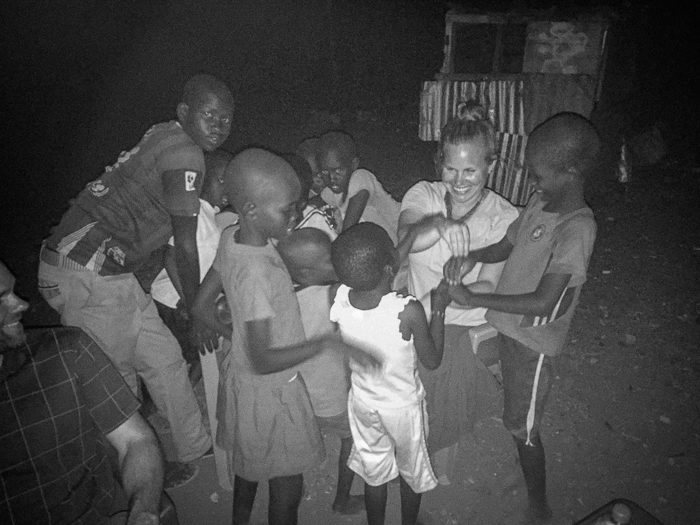
I have one more post of pictures from our trip to the northern border of Kenya. We drove two hours north of Kakuma to the last town before the Kenyan border with South Sudan. All those pictures are to come!



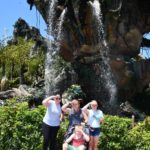
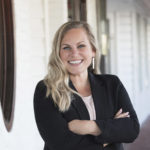
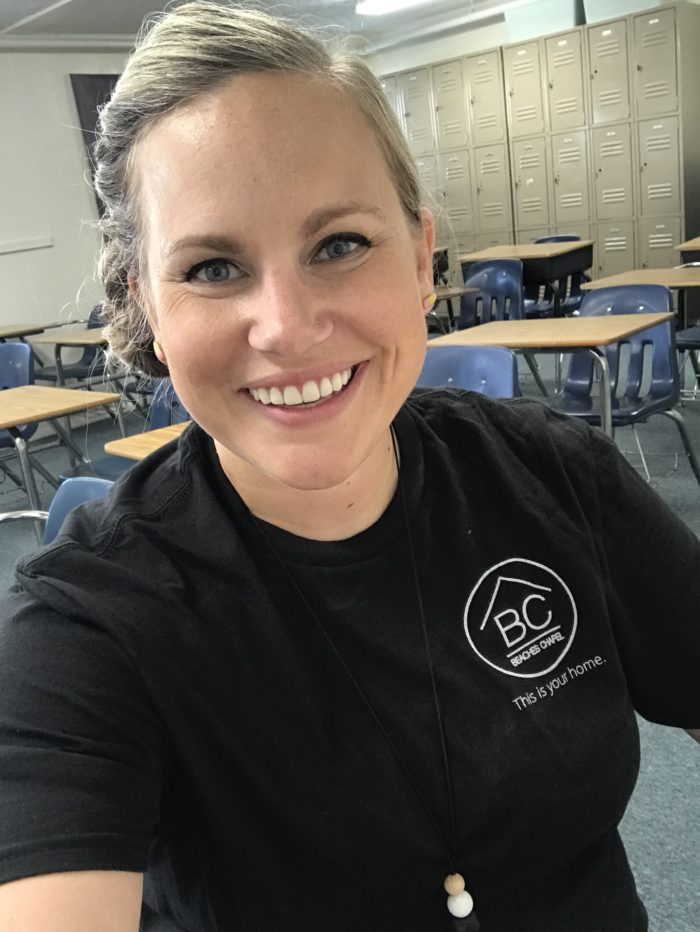
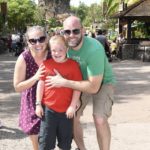
[…] post from our trip to Kakuma Refugee Camp at the end of February. (Click over to see the first and second […]